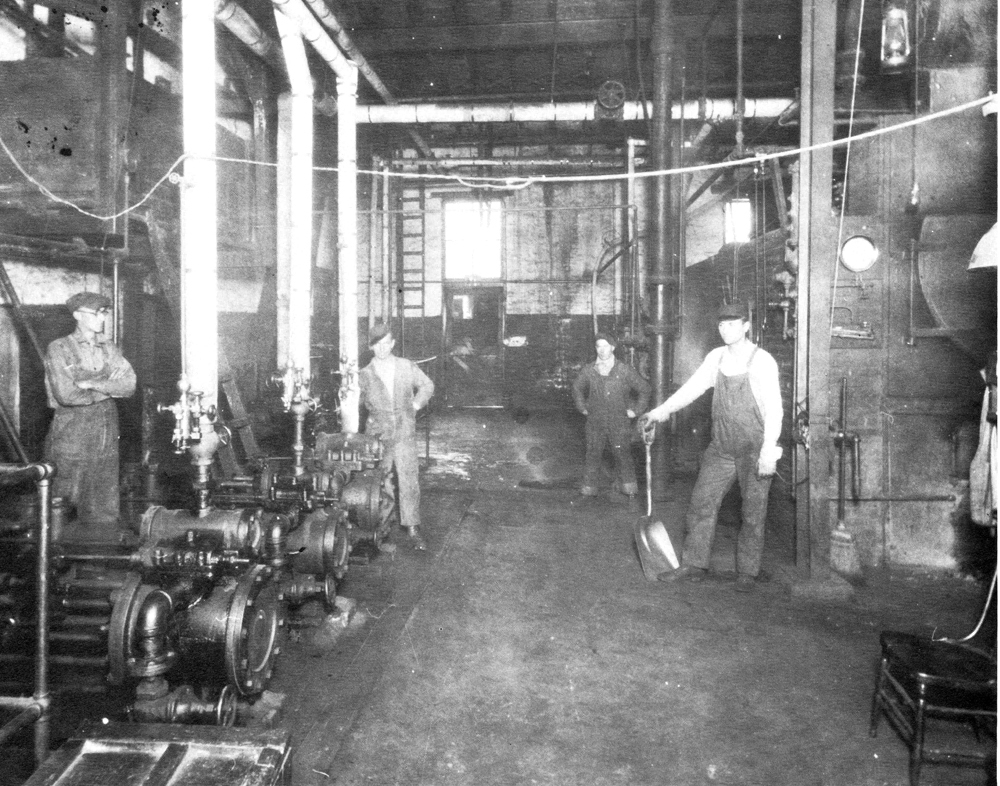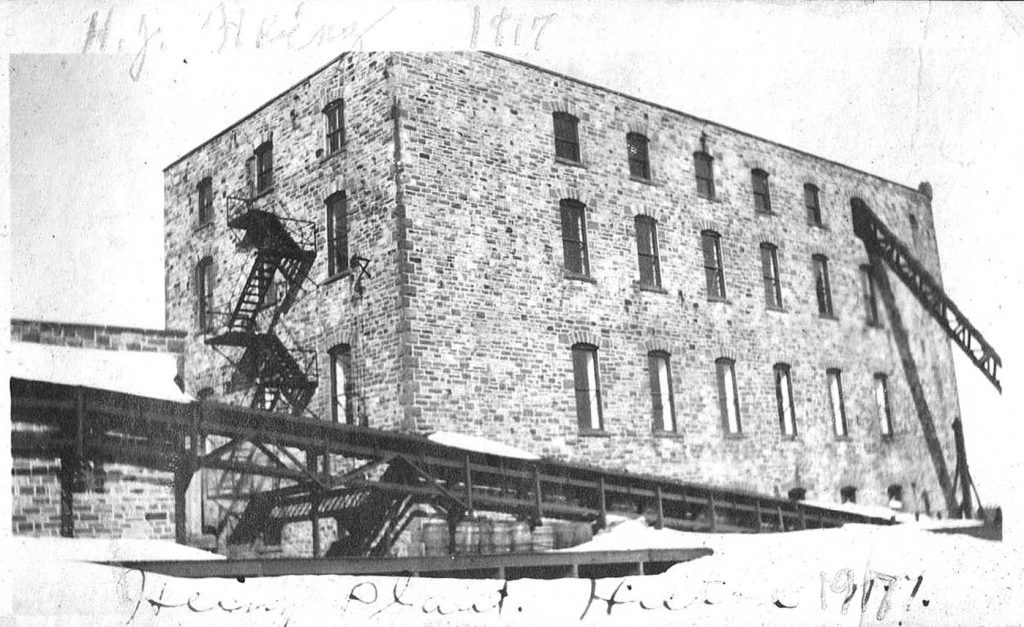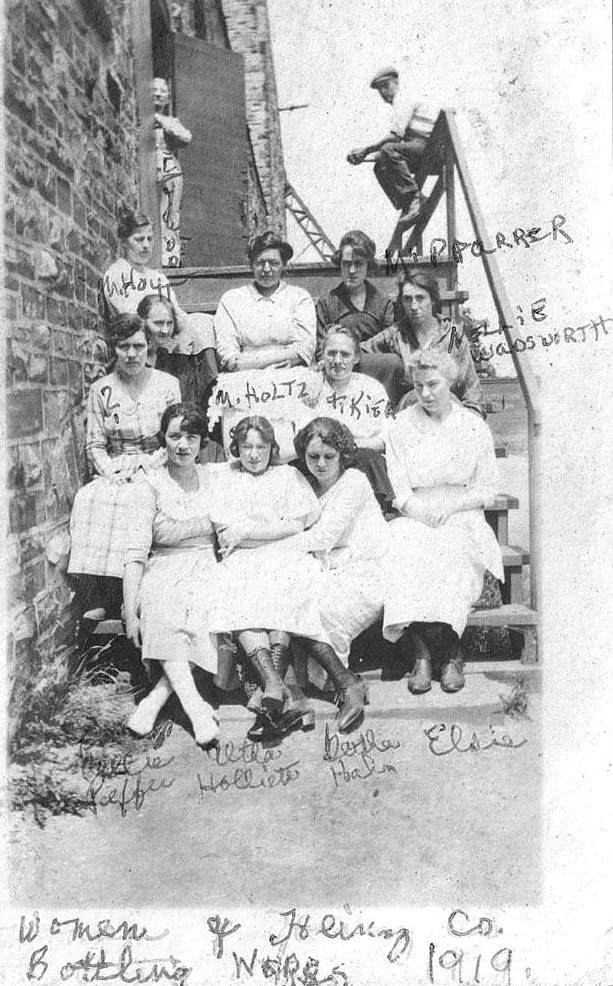History of the Heinz Plant

A young boy once asked what the great old stone building near his school in Hilton was. He said he had heard it was a fortress that the Hilton people had used 200 years ago when the village was under assault by the local Indians. I hated to disappoint him when I told him that it wasn’t nearly that old; that it was not a fort and that to my knowledge, Hilton had never been attacked by Indians.
After relating the old stone building’s original function, the boy was at least glad to know the truth, but it had deflated the romance worked up in his imagination. When I told him the building was used to make vinegar, he said, “Yuck!”
How many school children have passed the Heinz plant over the years on their bus routes to and from school and wondered similar things?
Early in the year 1906, a meeting was held at the old Village Hall on East Avenue to discuss arrangements for a site to locate the proposed Heinz Vinegar Works that was interested in building in Hilton.
A group of Hilton businessmen donated $2,100 to purchase land to locate the enterprise. It would create jobs for local citizens and would serve as a nearby outlet for the many cider apples produced in Parma and Hamlin orchards. The newly selected location would also sit right on the Rome, Watertown and Oswego Railroad complete with a rail siding next to the building. This new plant would enhance Hilton’s economy greatly.
Henry J. Heinz, founder of the Heinz Company, was born in 1844 and died May 14, 1919 at the age of 75. The company’s main plant was in Pittsburgh, Pennsylvania. They were known, and still are, for their Heinz Ketchup. They also produced apple cider vinegar, sauerkraut and a variety of other processed vegetable products which included his first product; horseradish packaged in clear bottles. Heinz started his business in 1869 and ran it for 50 years until his death in 1919.
Following his death, the Heinz family took over the enterprise. Heinz was known as a benevolent owner treating his employees with fairness and generosity. The result was a loyal, hardworking and trustworthy workforce that helped the company grow to the stature that it still enjoys 148 years later.
In 1924, Burt Cox received a gold medal for his 15 year tenure at the plant. His son-in-law, Frank Pickett, served as foreman of the plant for many years.
The Heinz Company became attracted to Hilton for its excellent apples grown on surrounding farms, the available labor force, and the proximity of the R.W. and O. (Hojack) Railroad. The company was growing and setting up plants in a number of small agricultural communities in the Northeast.
The four story stone building seen today was built of New York’s famous Medina Sandstone which was quarried near Holley and widely used for some of the country’s finest architectural edifices as well as sidewalks, home foundations, and famous monuments.
In 1904 Heinz’ move to “preservative-free” ketchup created problems because of losses in transporting near-ripe tomatoes to the Pittsburgh plant. H.J. launched a study to move his tomato ketchup plants to the tomato fields. Heinz, in 1904, added ketchup plants in Salem, New Jersey; Grand Rapids, Michigan; and Hilton, New York.
This move eliminated the transportation loss of the tomato and allowed better control in the production of preservative-free ketchup. These highly automated factories made ketchup from tomatoes in a matter of hours, which was critical to long shelf life of the ketchup.
Information on the Heinz Tomato Plant in Hilton is scarce, but when the company took note of the remarkable quality apple production in the Hilton district, their idea for the apple cider vinegar plant was formulated.
According to the present owners of the Heinz building, foundation trenches for the walls were dug eight to 10 feet deep. Construction commenced in April of 1906, and the massive building opened for business by November of that year. No information exists at the moment to reveal the story of the masons who constructed the impressive stone building or where they came from. The construction company was from New York City, and undoubtably contracted by the Heinz Co. in Pittsburgh.
Local Hilton artist B. Aylesworth Haines was commissioned by the Heinz Company to make a sign 78 feet long and six feet high for placement on the building’s roof that could be seen by the passing railroad cars on the Hojack.
Historian Leith C. Wright in her 1985 book, “Hilton, U.S.A.” noted that the company produced sauerkraut in 1911, and that machinery was installed in 1919 and 1920 for the bottling of the vinegar manufactured in the plant.
Frank Pickett served as foreman of the bottling plant until 1926 when that department was discontinued. George Dieckman, Sr. served as the resident manager of the local Heinz Plant from 1922 to 1931. In 1930 the Hilton plant was dismantled preparatory to being moved to Winchester, Virginia. At that time, vinegar making in Hilton was discontinued.
The factory, however, continued in use as a receiving station for area-grown tomatoes that were graded there and trucked to the Medina, New York factory for processing. Joseph H. Klafehn locally managed the operation in 1938, a record year for tomatoes, with sometimes as many as 100 large truckloads going into the plant per day during the “peak season.” A pea vinery was operated there for a time and in 1944, the plant employed about 25 German prisoners of war.
Duffy-Mott Co. later leased the old Heinz plant for apple storage purposes, but in 1957 the building was extensively damaged by a fire that originated in a box car on an adjacent rail siding.
In 1959, the building was used by the Hilton Fruit Co-op, but was later purchased by Collamer Bros., Inc. who sold the plant in 1972 to the Carl Petronio Construction Co. of Albion. In 1976 the building at 101 Heinz Street again changed hands and operated under the name of “Snyder Specialties, Inc.,” a company involved in the manufacture of special types of door fasteners. The “Dance Factory,” a school of the dance operated by Cheryl Lauderdale later utilized space in the building.
In October 1981 Frederick Hunte, owner of Omega Consolidated Corporation, a machine tool builder and contract machining source, puchased the building. Today it is owned and successfully operated by Frederick’s sons; Thomas, Martin and Robert.
When the Huntes’ took possession in 1981 there were several small companies leasing space. Today, Omega occupies all the space and employs 20 people. Many improvements have been made to the operation including an office addition in 1989. However the grandeur of the impressive old Medina Sandstone structure still commands attention on the Hilton Village landscape.
Some interesting notations gleaned from the Hilton Record, Hilton’s weekly eight page newspaper running from 1897 to 1973 and the Brockport Republic 1856 to 1925: are as follows:
Brockport Republic, April 19, 1906:
“The H.J. Heinz Co., of Pittsburg, will probably establish a pickling plant at Hilton. The citizens have raised $2,100 for a site containing seven acres near the railroad.”
Brockport Republic, November 22, 1917:
“Raymond Kerwin, an employee of the H.J. Heinz factory in Hilton, had a narrow escape from death when his clothing caught in the cogs of a belt conveyor. As he was being drawn into the conveyor he had the presence of mind to catch hold of a post and although all of his clothing was stripped from his body he escaped injury.”
Rochester Democrat, November 17, 1920:
“George Peffer, 50, of Hilton, was drowned in a cider vat at the plant of the H.J. Heinz Company in that village yesterday afternoon. The vat was about 15 feet deep and contained about a foot of cider and sediment. Peffer had gone into the vat to open a small outlet at the bottom preparatory to make repairs. The fumes overcame him and he fell face downward in the cider. Five companions were overcome in attempting to rescue him. They were Bert Cox, James Sigler, Leo Wood and Schuyler Cox.
After making two trips into the vat Bert Cox succeeded in placing a rope about Peffer’s body. Cox then fell unconscious and companions pulled him from the vat. They then recovered Peffer’s body. Coroner Atwater was notified and ordered Peffer’s body removed to an undertaking parlor in Hilton.”
Brockport Republic and Brockport Democrat, July 11, 1940:
“While the Heinz Co. is not doing any canning at its plant in Hilton, it will thresh peas at Hilton and send them to Medina for canning.”
Brockport Republic and Brockport Democrat,
November 27, 1947 (25 years ago 1922):
“David Munger, an employee of the Heinz Vinegar Works in Hilton, met with a serious accident when he stepped through an open trap door, into an apple chute, falling three stories to the ground.”
When I asked Martin Hunte what his plans were for the presently unused four story original Heinz building, he indicated that the best option would be to convert it to commercial space when demand called for it.
A year ago there were possible plans to develop loft apartments in that section, however, the idea did not materialize. The old building is stable, and anxiously awaits its best future use. In the meantime as one travels down Hojack Lane in Hilton and passes Omega Consolidated they cannot fail to think in their mind, “there’s the old Heinz Vinegar Plant”…indeed a lasting monument to Hilton’s history.
Information for this article obtained from: Village of Hilton Historian’s Office, interview with Martin and Bob Hunte.
Provided Photos
by David H. Crumb Parma-Hilton Historian






